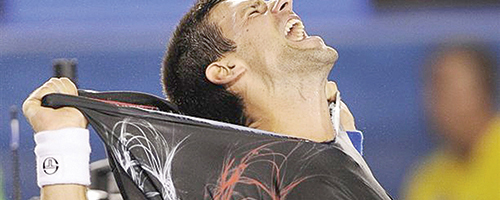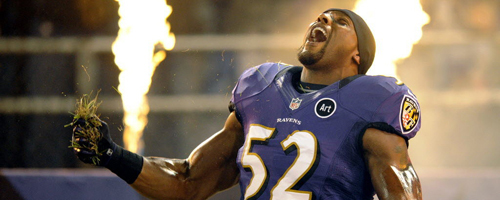The portion of the calendar rationed out to serve as the official offseason of the Association of Tennis Professionals World Tour spans about a month and a half, from the conclusion of the World Tour Finals in mid-November to the start of the first sanctioned tournament at the end of December.
Basement notes: Australian Open

The portion of the calendar rationed out to serve as the official offseason of the Association of Tennis Professionals World Tour spans about a month and a half, from the conclusion of the World Tour Finals in mid-November to the start of the first sanctioned tournament at the end of December.
In truth, there is no offseason; professional tennis players form a ceaseless caravan through the international market, stretching out to the edges of the map and making stops along the way in every scattered hamlet willing to pay for the privilege. Those who take holidays from the tour do so because they can afford to do it, or because an injury has left them no other choice. The rest simply move on to the next stop, the next rankings grab, the next (oversized) check. On the ATP Tour, you eat what you kill.
So it comes as little surprise that, after roughly eight weeks of exhibition events and assorted team competitions, the machine is back on the move again and fighting it out in Melbourne Park at the Australian Open. Once an afterthought among the majors, routinely skipped by many players even after they were no longer forced to travel there by boat, the “Grand Slam of Asia/Pacific” is now one of the most highly regarded and lucrative events in any sport, a career highlight for anyone making their living with a racket and rubber soles.
Though there were 128 players entered in the men’s draw on Monday morning, conversation before the tournament was predictably funneled toward the foursome of Novak Djokovic, Roger Federer, Andy Murray and Rafael Nadal. Those four names have been distributed in some order at the top of the rankings since 2008, and are responsible for 30 of the past 31 Grand Slam titles. When Nadal confirmed last month that a stomach virus would delay his return from lingering knee problems and keep him out of the tournament, the draw immediately opened up for the rest of the field, if only a little.
Djokovic, the number-one-ranked player and defending champion in Australia, has earned the right to be called the favorite this year. After losing his top ranking to Federer last summer and falling to Murray in the U.S. Open final two months later, the Serbian found his form again during the fall indoor swing, collecting a Masters title in Shanghai along with his second victory at the year-end championship and finishing the year back at number one. Though he failed in 2012 to match his dominant three-major run of the previous year, Djokovic is still the smart money almost every time he steps onto a hard court, and has won the title in Melbourne three times.
Ranked two spots below him is Murray, likely the most significant obstacle standing in the way of another major run by Djokovic. The Scotsman is returning after a career-altering season in 2012, when he beat Federer for the gold medal at the London Olympics and finally claimed his first major title in September. Under the guidance of eight-time Grand Slam winner Ivan Lendl, Murray was able to channel his often-destructive temper and shed the baggage of his first four losses in major finals (Lendl also lost his first four). In doing so, he also managed to come out from under the suffocating burden of his nation’s 76-year wait for a Grand Slam men’s singles champion, which will only make Murray more dangerous in 2013.
Just above him in the rankings sits Roger Federer, who arrived in Melbourne Park surprisingly under the radar, if a player with 17 major titles to his name and more than 300 weeks logged at number one could ever claim to be overlooked. Though Federer is clearly on the downslope of his career at 31, the combination of his flawless technique, unparalleled movement and monastic commitment to fitness has allowed him to hold steady in the rankings and remain in the discussion at the year’s biggest events.
To this end, Federer has also begun to organize his schedule more judiciously in the last couple of years, creating space in between stops on tour in order to eliminate some of the wear on his body and peak during the season’s most important stretches. This year, he scaled back even more, committing to only 14 tournaments (15 if he remains in the top eight and qualifies for the year-end championship) and coming into the Australian Open without any match play for the first time. He also opted out of two Masters tournaments in the spring and does not plan to compete in the Davis Cup for Switzerland this year, a clear statement that he intends to bet everything on the majors during this final phase of his career.
Even without Nadal in the draw, the prospects of a fifth Aussie Open title for the Basel-born legend will be complicated by a field packed to capacity with contenders. As the rest of the tour have struggled to pierce the extended reign of the top four, it’s often easy to overlook the fact that professional tennis is currently populated by one of the deepest generations of talent in its history.
Juan Martin del Potro, the soft-spoken Argentine with the pistol-whip forehand who doubles as the only man outside of the top four with a major title in nearly eight years, has steadily worked his way back from the wrist injuries that doused his momentum after winning the U.S. Open in 2009. It’s been an agonizingly slow road back since then, but del Potro arrived in Australia ranked seventh and represents a serious problem for the rest of the field as long as his body holds up.
Del Potro and the rest of the dark horses (though the term is decidedly relative) will be joined by David Ferrer, a tireless Spaniard whose game was constructed using everything del Potro never had any use for. Ferrer has been a fixture in the top 10 for several years running but has yet to make his mark at the majors, having never reached a Grand Slam final. He was the chief beneficiary of Nadal’s withdrawal this year, moving into his own quarter of the bracket and ensuring that he won’t run into any of the top three before the semifinals. With a little help from an upset in another section, Ferrer’s soccer-pitch stamina may just carry him to the championship round this year.
Other candidates who stand out from the pack include the eternally morose Tomas Berdych, whose thudding baseline game can overwhelm even the most diligent defense once the court begins to quicken, and Jo-Wilfried Tsonga, the unpredictable Frenchman with a dynamic all-court attack that got him to the Australian Open final in 2008. Berdych also has a final-round appearance to his credit—at Wimbledon in 2010—and both he and Tsonga have the talent to win seven matches in a row against anyone in the world. It remains to be seen if either has the temperament to allow them to do so.
As demonstrated by the gradual decline of Federer and the ongoing physical breakdown of Nadal, time will eventually claim this regime too—of that we can be certain. For the better part of eight years, those looking in on the feast among the top four have labored to come up with an answer, and for eight years they have largely come up empty. But the season is brand new again, and the tour returns with fresh legs to try to make history at a tournament that moved from the tail end of the year to the very beginning, from Kooyong to Melbourne and from grass to hard court, adapting and evolving for a new generation on the ruthless and interminable procession of the ATP Tour.





